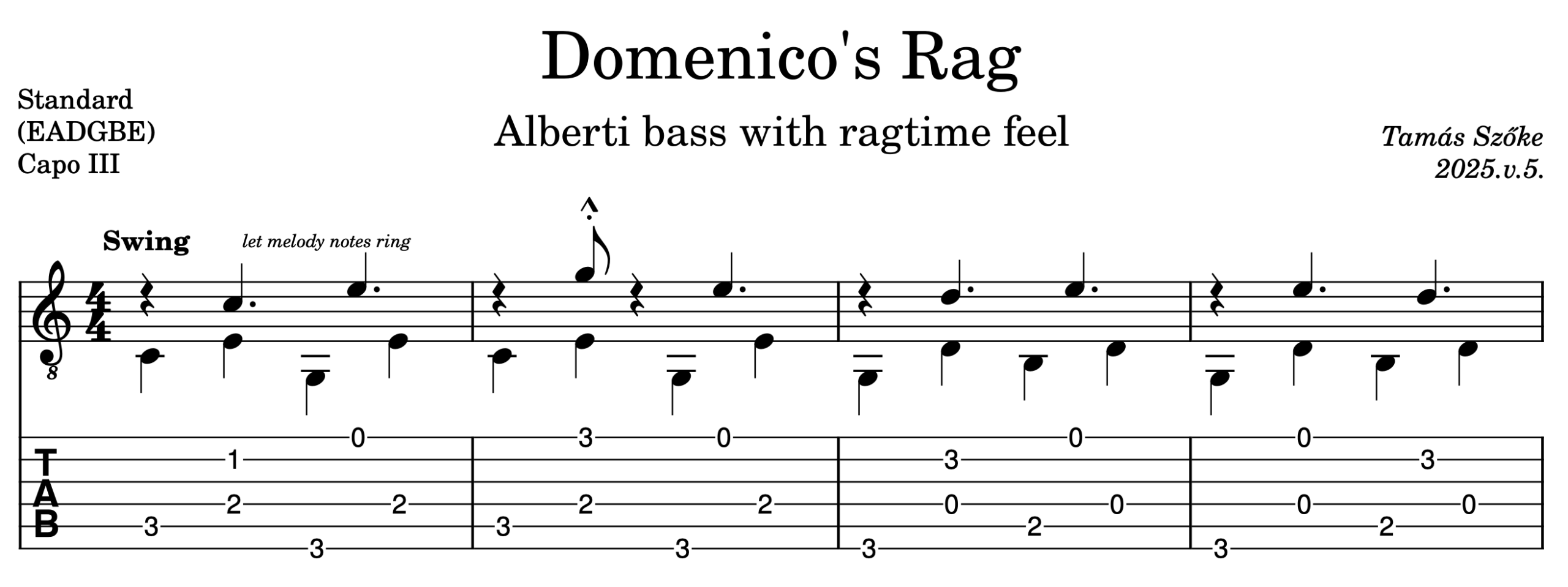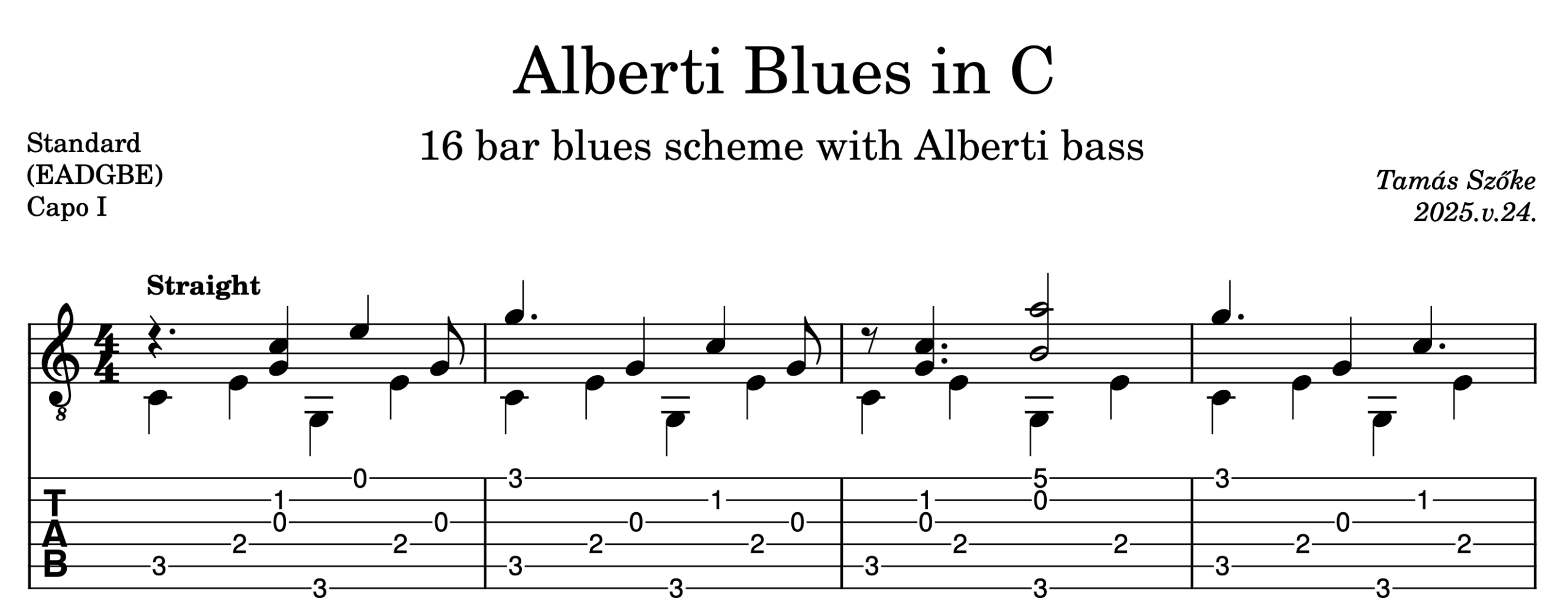Mixing ingredients
ALBERTI BASS & Guitar
This article gives you an insight how to use a classical accompaniment technique to spicing up your fingerpicking guitar playing.
A historical review
DOMENICO ALBERTI (1710-1740/46)
was an Italian amateur singer-harpsichordist who solved his vocal accompaniment with characteristic arpeggios. This technique survived in works by classical composers – e.g. Beethoven Piano Sonata No.14 (Moonlight), Mozart Piano Sonata in C (K.545); a later example is Schubert’s Ständchen.
This is very nice to know, but how does it fit in with fingerpicking/fingerstyle guitar playing?
Good question! Because it sometimes – typically in case of C and G major – gives itself, and always good to know what we are doing. In the score below, please notice the bass has a C-E-G-E – C major, and G-D-B-D – G major triads (referred also as ‘broken triads’ or ‘Alberti-bass‘).

The arpeggiated chords were part of the baroque repertoire, many can be found in Bach’s preludes (e.g. Wohltemperiertes Klavier, and for guitar the BWV 999) or you can listen Vivaldi’s Largo from his ‘Winter Concerto’ (Op. 8, RV 297). They were carried forward by the guitar literature in the form of etudes (see our beloved Op.60 by Matteo Carcassi), but the 20th century pop and fingerstyle guitar music is based on this technique too: take a one measure rhythmic pattern and play over the chord progression.
The Alberti-bass is a contrary direction, where the basic idea has been simplified.
going a step further
The challenge
Playing broken triads, while the melody floating above it is easy on keyboard/piano because you have two hands, but on guitar? There it’s a tough job just to play triplets led by classical harmonic rules. And should we even add a melody on top? Yes, that’s sound weird enough to try!
So the task is:
– The bass consists of broken triads
– preferably stick to the three bass strings, and
– we should use the classical harmonic rules to lead the broken bass lines – yes, we have three of them!
– Playing just the bass is not really a challenge, so having free fingers to play the melody notes is very welcome.
– Oh, and what if we’ll use this kind of bass exclusively in our song?
After noodling around for a while, I came up with the chord progression of
C-G-Am-F (I-V-VI-IV):

Grab your guitar!
Examples & Exercises
Use the attached sheet music for your practice: after learning the bass, add a one- or two-tone melody pro measure, which you can use to build up your own practice using the thought-provoking sample collection. Your journey goes towards two small and very entertaining piece.
Domenico’s Rag uses one of the patterns, and Alberti Blues is an experiment: applying the Alberti bass to a 16-beat blues round. Here you have to think about the fingers of the left hand.


Would you like to learn more?
I teach Classical, Fingertyle or Electric Guitar in Vienna (A)!

